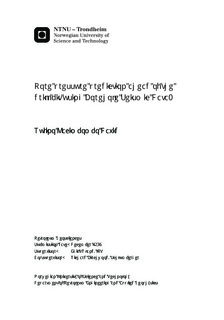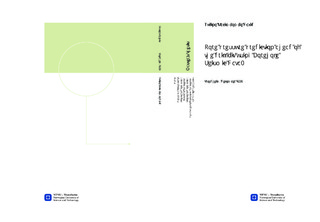| dc.description.abstract | Knowledge of the formation pore pressure is fundamental to maintaining safety and control of the borehole during drilling operations. Non-hydrostatic pressures can cause blowouts and borehole instability and when they are properly managed the cost of drilling can be significantly reduced [1].
In this thesis pore pressure was inferred below the drill bit from synthetically generated borehole seismic data. The formation properties used in the study were based loosely on well log data from the Gulf of Mexico. A hypothetical 100 m thick sedimentary column with horizontal layers was constructed from this data. A synthetic seismic waveform produced by a standard (Ricker wavelet) source and recorded by a single hypothetical receiver at the top of the column was inverted for velocity, bulk density and layer thickness below the receiver. Only upgoing waves were used in the inversion. In practice upgoing and downgoing waves are often separated during processing.
Because the solution is non-unique, the inversion was subject to constraints that could reasonably be applied in a practical setting. The inversion was formulated as a Bayesian problem and solved using the Metropolis algorithm, which generated samples from the posterior probability density function. The inversion scheme was programmed using Wolfram Mathematica® software.
It was found that with the aforementioned constraints, impedance (product of velocity and density) could be obtained with reasonable accuracy and with greater accuracy than the velocity or bulk density individually. The realizations of impedance produced by the simulations were converted to pore pressure using an impedance to pore pressure transform rather than the standard velocity to pore pressure transform. The estimated pore pressure was compared to the correct pore pressure computed using the original impedance used to generate the synthetic seismogram. In this way it was possible to analyze the robustness and applicability of the method to drilling operations.
ii
The results showed that the method is capable of reproducing the general trend of pore pressure up to least 50 m below the lowest anchor point. A component of high frequency noise was also observed, but this is usually smoothed out in practice. The study did not explore the potential for inferring pore pressure at greater depths. Four key assumptions/simplifications were made in the course of carrying out the inversion. The first is that layers are horizontal. Secondly, no noise was added to the synthetic seismic data. Thirdly, acoustic attenuation was assumed to be known and constant over the sedimentary column. The sensitivity of results to noisy data and errors or uncertainty in the Q-factor (that governs attenuation) needs to be explored. Finally the statistical distribution of layer thicknesses below the receiver was assumed to be known within a wide margin of error. In practice when drilling a well, the thicknesses of layers below the bit are not known. Consequently it is proposed that statistical information from offset set wells or outcrops could be used. This study shows that even a crude approximation of the actual layer thickness distribution can be sufficient to constrain the profile of impedance below the bit to within reasonable bounds. | |

